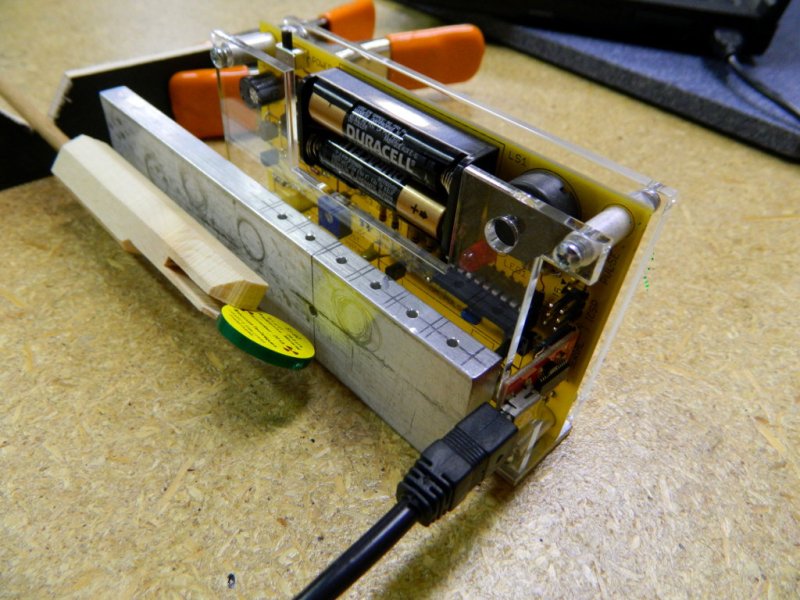As part of my Black Box project, I purchased a small sample of Strontium-90. Targeted at the testing/educational markets, these samples are license exempt (in the US, at least), and can be purchased from an educational retailer for ~80$. To make them safe to handle, a common form-factor for these samples is an acrylic disk measuring 1″ in diameter, and 1/8″ thick. A hole is drilled partway through the center of the disk, where the radioactive source is evaporated/condensed and potted in place with epoxy. This yields a thin disk of source material, completely encased and safe to use.

While I was experimenting with it for the Black Box, I developed a hunch that this sample did not emit uniform radiation. That is, some viewing angles would produce higher count-rates than others. This wasn’t an issue for the project, and thus I did not spend the time to investigate. But now that its done, and I have more time, I figured I’d investigate.
I collected this information by mounting the sample on a spinning arm in front of a MightyOhm Geiger counter. Since the Geiger tube is physically larger than the sample, I placed an aluminum shield with an 1/8″ pinhole between the sample and the counter. This ensures that the counter only ever observes a single angle at a time, making for finer, less “averaged” data. The counter is connected to a computer via its serial header and an FTDI adapter.

I collected counts for 5 minutes at 7.5 degree rotation increments. The CPM values were computed from the counter’s CPS values, to avoid having to wait an extra minute between samples for the buffers to roll. After ~6 hours of data collection and fighting with gnuplot, here’s what I found:

As I had guessed, the distribution is non-uniform, though I had no idea it was that non-uniform. There is close to no radiation emitted from the sides of the disk (for reference, the white hole in the center of the graph is my measurement of background radiation). I presume this is a combination of the extra acrylic acting as a shield, and the reduced surface area of the Strontium due to viewing it end-on. Curiously, the sample also emits more radiation from its bottom (non-label side) than it does from it’s top. Either the hole was drilled further than half-way through the acrylic, or the epoxy and label may be a better shielding material than the acrylic. Or both.
You can find my data and my plot file in this gist.